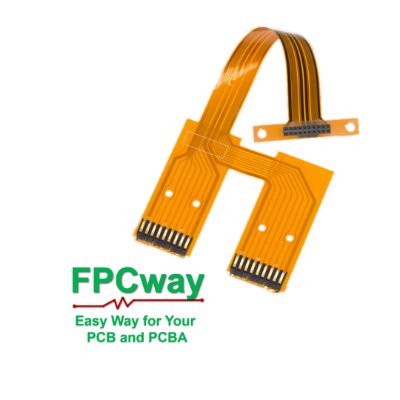#fpcway search results
Single-sided flexible boards do not require interlayer connectivity, therefore plating vias are unnecessary. Double-sided, multilayer, or rigid-flex boards require metallization after drilling, necessitating additional steps such as plasma or chemical descaling.#FPCway #flexPCB

Traditional adhesives for bonding substrates are less expensive, have a longer history of use, and are more readily accepted and understood; adhesive-free materials are expensive, but offer excellent heat resistance, chemical resistance, and dimensional stability.#FPCway #flexPCB

Protective coatings are applied to circuits using liquid materials or dielectric films, either by coating or low-pressure lamination. In some cases, windows are defined in a pattern.The final cross-linking is achieved through thermal or ultraviolet polymerization.#FPCway #flexPCB

When fabricating conductor circuits, the terminal area must be pre-windowed; this is the most obvious difference between fpc and pcb. Using insulating materials with the same composition as the substrate dielectric produces a symmetrical, consistent, and stable structure.#FPCway

Laser processing modes include two types: CO2 laser processing and excimer laser processing. The former uses a pulse-based method to remove material, while the latter uses a scanning method. Each has its advantages and disadvantages.#FPCway #flexPCB #flex #fpc #rigid-flex pcb

Single-sided flexible boards do not require interlayer connectivity, therefore plating vias are unnecessary. Double-sided, multilayer, or rigid-flex boards require metallization after drilling, necessitating additional steps such as plasma or chemical descaling.#FPCway #flexPCB

Laser processing modes include two types: CO2 laser processing and excimer laser processing. The former uses a pulse-based method to remove material, while the latter uses a scanning method. Each has its advantages and disadvantages.#FPCway #flexPCB #flex #fpc #rigid-flex pcb

Traditional adhesives for bonding substrates are less expensive, have a longer history of use, and are more readily accepted and understood; adhesive-free materials are expensive, but offer excellent heat resistance, chemical resistance, and dimensional stability.#FPCway #flexPCB

Single-sided flexible boards do not require interlayer connectivity, therefore plating vias are unnecessary. Double-sided, multilayer, or rigid-flex boards require metallization after drilling, necessitating additional steps such as plasma or chemical descaling.#FPCway #flexPCB

When fabricating conductor circuits, the terminal area must be pre-windowed; this is the most obvious difference between fpc and pcb. Using insulating materials with the same composition as the substrate dielectric produces a symmetrical, consistent, and stable structure.#FPCway

Protective coatings are applied to circuits using liquid materials or dielectric films, either by coating or low-pressure lamination. In some cases, windows are defined in a pattern.The final cross-linking is achieved through thermal or ultraviolet polymerization.#FPCway #flexPCB

The drill bit used for drilling flexible boards must have good chip removal capabilities; otherwise, chips may not be able to be discharged smoothly, leading to quality problems. Currently, flexible board hole-forming technology is widely used.#FPCway #flexPCB #flex #fpc #rigid

Something went wrong.
Something went wrong.
United States Trends
- 1. Epstein 1.19M posts
- 2. Tarik Skubal 5,526 posts
- 3. Cy Young 11.8K posts
- 4. Paul Skenes 7,880 posts
- 5. Virginia Giuffre 66.9K posts
- 6. Steam Machine 63.8K posts
- 7. Starship 14.3K posts
- 8. Igor 8,788 posts
- 9. Raising Arizona N/A
- 10. Bill Clinton 28.7K posts
- 11. Valve 43K posts
- 12. #GoBolts N/A
- 13. Xbox 65.7K posts
- 14. #dispatch 60.5K posts
- 15. Borgen N/A
- 16. #LightningStrikes N/A
- 17. Dana Williamson 13.2K posts
- 18. Blanca 25.6K posts
- 19. Situation Room 12K posts
- 20. Tim Burchett 25.4K posts



